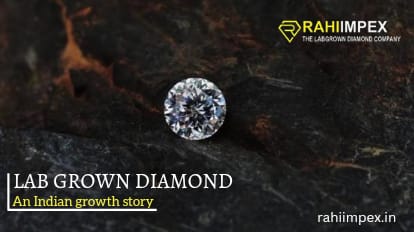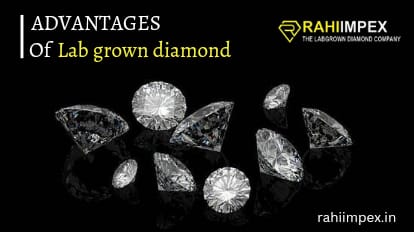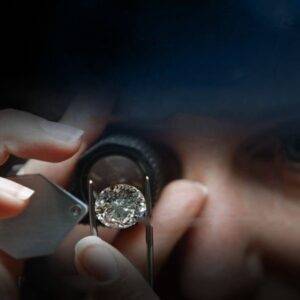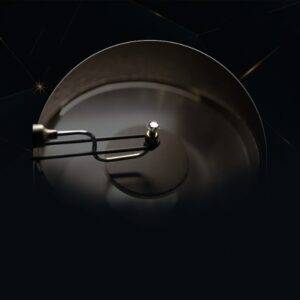Lab-grown diamonds have been making waves in the jewelry industry, offering consumers an ethical and sustainable alternative to mined diamonds. As this market continues to grow, jewelers need to stay informed about the latest trends in lab grown diamond manufacturing. In this blog, we’ll explore some of the top trends and insights that can help jewelers navigate this evolving landscape.
- Increased Demand: One of the most significant trends in lab-grown diamond manufacturing is the surge in demand. Consumers are becoming more aware of the ethical and environmental issues associated with mined diamonds, leading many to choose lab-grown options instead. This growing demand presents a significant opportunity for jewelers to expand their offerings and cater to this evolving market.
- Advancements in Technology: Technology plays a crucial role in the manufacturing of lab grown diamonds. Recent advancements have made it possible to produce larger, higher-quality diamonds more efficiently. Jewelers can leverage these technological innovations to offer a wider range of lab-grown diamond options to their customers.
- Diverse Product Offerings: In the past, lab-grown diamonds were primarily used for industrial purposes. However, as technology has advanced, manufacturers can now produce lab-grown diamonds that are virtually indistinguishable from mined diamonds. This has led to a diverse range of product offerings, including colorless diamonds, fancy colored diamonds, and even diamond melee for use in jewelry settings.
- Cost-Effectiveness: One of the key advantages of lab-grown diamonds is their cost-effectiveness compared to mined diamonds. While the initial investment in manufacturing technology can be significant, the overall cost of producing lab-grown diamonds is lower than that of mining and processing natural diamonds. This cost savings can be passed on to consumers, making lab-grown diamonds an attractive option for budget-conscious shoppers.
- Environmental Sustainability: Another major trend driving the popularity of lab-grown diamonds is their environmental sustainability. The mining of natural diamonds has a significant environmental impact, including deforestation, habitat destruction, and water pollution. In contrast, lab-grown diamonds are produced in a controlled environment with minimal environmental impact, making them a more sustainable choice for environmentally conscious consumers.
- Transparency and Traceability: As consumers become more informed about the origin of their diamonds, transparency and traceability have become important considerations. Lab-grown diamond manufacturers are increasingly providing detailed information about the origin and production process of their diamonds, allowing consumers to make more informed purchasing decisions.
- Partnerships and Collaborations: To meet the growing demand for lab-grown diamonds, manufacturers are forming partnerships and collaborations with jewelry retailers and designers. These collaborations help manufacturers expand their reach and provide jewelers with access to a wider range of lab-grown diamond products.
| Attribute | Description |
| Market Size | Revenue (USD Billion) |
| Market size value in 2022 | USD 10.8 Billion |
| Market size value in 2032 | USD 20.6 Billion |
| CAGR (2023 to 2032) | 6.7% |
| Historical data | 2019-2021 |
| Base Year | 2022 |
| Forecast | 2023-2032 |
| Region | Asia Pacific, Europe, South America, North America, Middle East & Africa. Regions are further analyzed at the country level. |
| Segments | Manufacturing Method, Size, Nature, Application |
Conclusion
In conclusion, the lab-grown diamond industry is experiencing rapid growth and evolution, driven by increased consumer demand, technological advancements, and a growing focus on sustainability and transparency. Jewelers who stay informed about these trends and adapt their offerings accordingly will be well-positioned to capitalize on the opportunities presented by the lab-grown diamond market.
FAQs
- What are lab-grown diamonds? Lab-grown diamonds are diamonds that are created in a laboratory setting rather than mined from the earth. They have the same chemical composition, crystal structure, and physical properties as natural diamonds.
- How are lab-grown diamonds made? Lab-grown diamonds are made using two main methods: High Pressure High Temperature (HPHT) and Chemical Vapor Deposition (CVD). HPHT mimics the natural diamond formation process, while CVD involves the deposition of carbon atoms onto a substrate to grow the diamond.
- Are lab-grown diamonds real diamonds? Yes, lab-grown diamonds are real diamonds. They have the same physical, chemical, and optical properties as natural diamonds and are indistinguishable from them without specialized equipment.
- Are lab-grown diamonds cheaper than natural diamonds? Generally, lab-grown diamonds are more affordable than natural diamonds of similar quality. This is because the production process is less costly and more efficient than mining diamonds from the earth.
- Are lab-grown diamonds environmentally friendly? Yes, lab-grown diamonds are considered more environmentally friendly than natural diamonds. They require less energy and water to produce and do not involve the environmental impact of mining.






